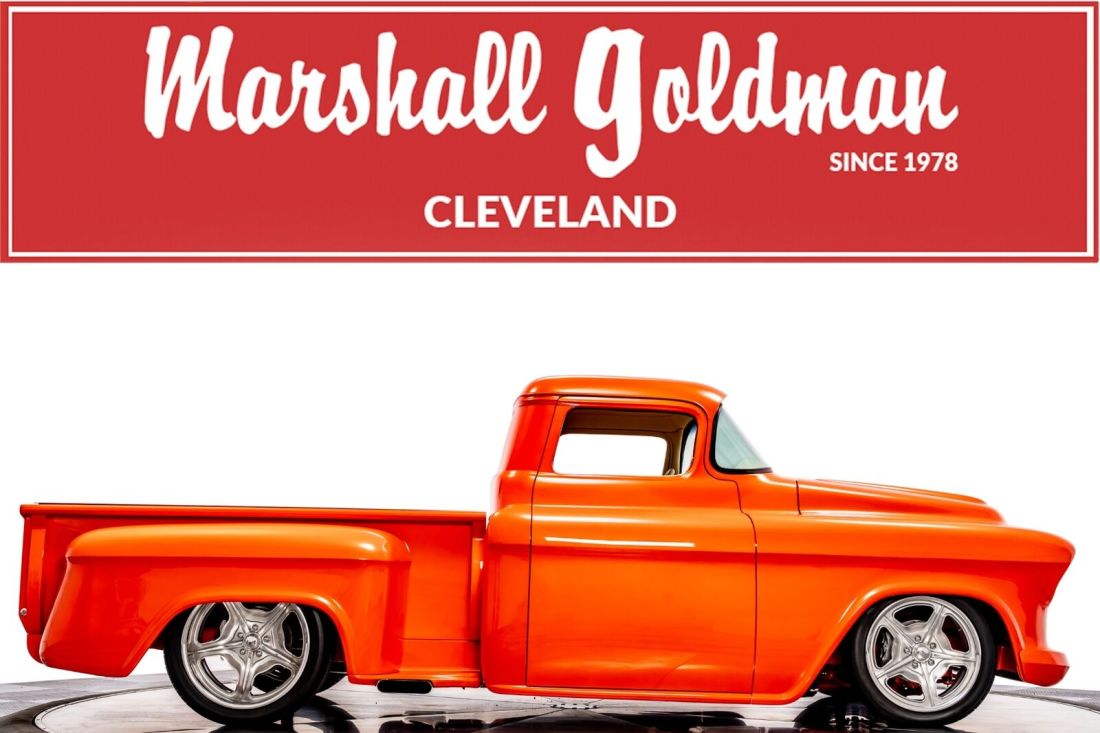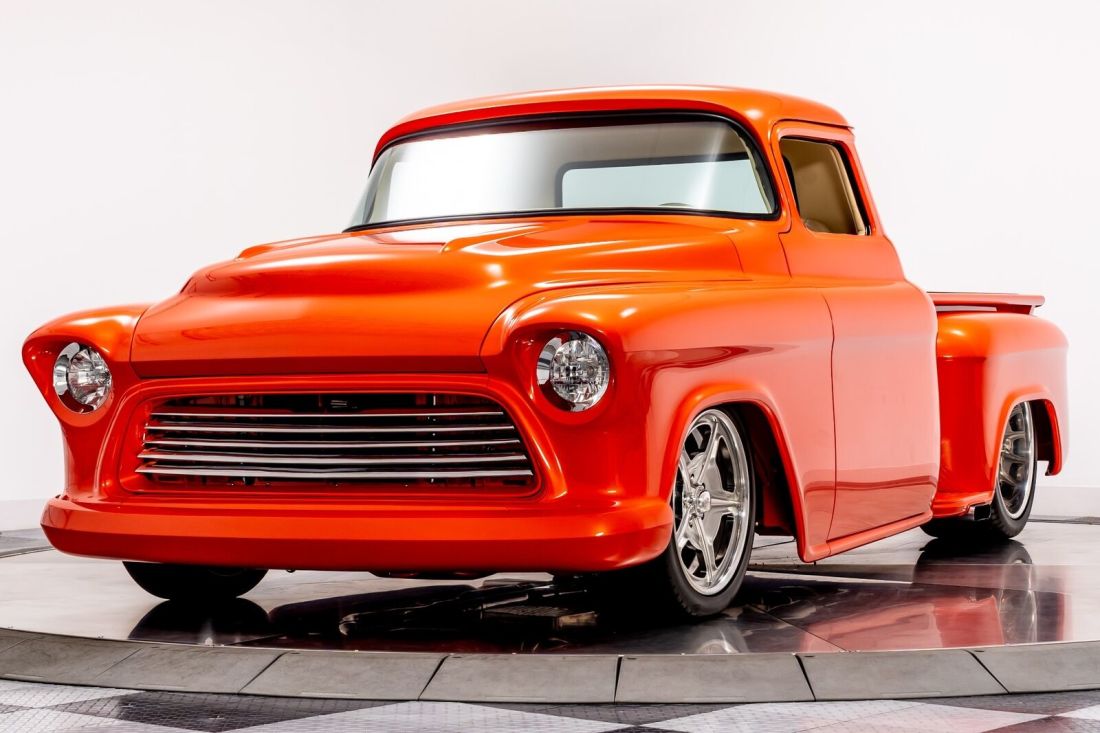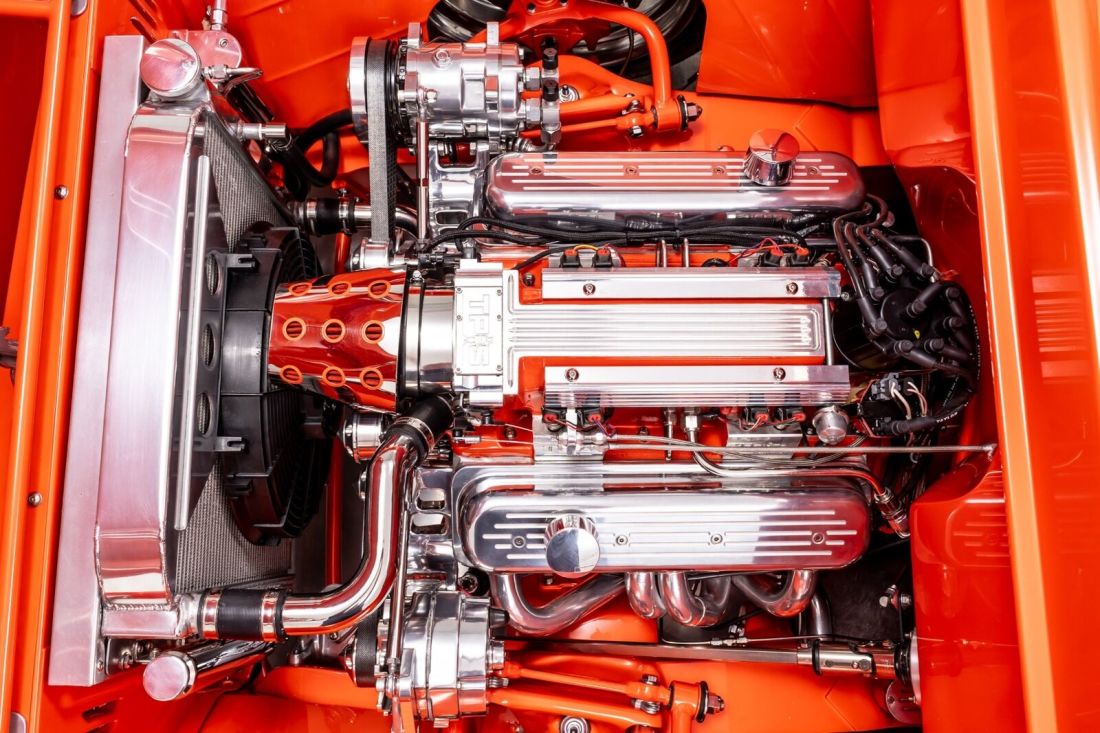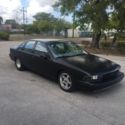1955 Chevrolet 3100 396ci Stroker V8 4-Speed Automatic
| Make: | Chevrolet |
| Model: | Other Pickups |
| Type: | -- |
| Year: | 1955 |
| VIN: | 000000385317T255X |
| Color: | Orange |
| Engine: | 396ci Stroker V8 |
| Fuel: | Gasoline |
| Transmission: | Automatic |
| Drive type: | -- |
| Interior color: | Cream |
| Vehicle Title: | Clear |
| Item location: | Cleveland, Ohio, United States |
1955 Chevrolet Other Pickups Additional Info:
If you're looking for a completely over the top custom build then this '55 Chevy truck is for you. We could try and describe it for you, but the builder, Darrell Cimbanin, co-owner of Cimtex Rods in Texas, kindly wrote this for Hot Rod magazine:My brother Tim and I didn't set out to build a show truck. When we started looking for a truck to build it was going to be our "driver" shop truck to pull our pro-street '55 Chevy sedan. The plan was to build a plain, nothing-fancy truck and paint it black lacquer. We found a '55 longbed that was an original Texas truck at a swap meet in Belton, Texas. It was an ugly green and every panel was damaged but the cab was rust-free. We paid $900 and dragged it home.
We stripped the truck, dipped the body and trashed the six-banger and stock suspension. We shortened the frame, bought a new short bed, and installed a Camaro front clip in front and inboard leaf springs and a 9-inch Ford axle in back.
After putting the body and bed back on the frame, we didn't like the way the truck sat, so we reworked the suspension to get "the look. '" After much trial and error, the Fatman shortened control arms, spindles, and Air Ride airbags put the frontend where we wanted it.
The back of the truck wasn't low enough so we clipped the rear frame and started over, building it out of 2x3 tubing to give us room for the pro-street tires, coilover shocks and four-link suspension. The new bed had to be cut for the 8-inch handmade wheel tubs and to make room for the reworked frame. For the engine we started with a '91 350 TPI motor coupled to a 700R4 transmission, building the truck around that platform. After we started modifying the body, particularly when I dropped the top, the truck started taking shape, and we realized this was no longer going to be a tow vehicle...or shop truck. We decided to build a true hot rod truck that would showcase our hot rod building business (Cimtex Rods, Jarrell, Texas). It was going to need more motor, tranny, gears, a cool interior--and a hot paint job.
The truck was going to have all the latest electronic features including a radical fuel injected motor, comfort control air conditioning, remote power windows and doors, CD, digital dash, LEDs...the works. While we continued making modifications to the body and bed, we started gathering information and parts to modify the engine we had, which wasn't going to be easy. Finally, to get the radical fuel injected engine we wanted, and to ensure the driveability we wanted, we turned to TPIS in Minnesota.
Coming from a drag racing background and always building my own motors, I was a little skeptical of having one built. But they came through with a 520hp, 396ci stroker small-block. For the transmission, we chose the Art Carr 700R4 with a 3,200 stall converter to hold those horses.
After we wedge-cut and dropped the top, windows were the next challenge. We couldn't find anyone to cut the windshield, so we had to do it ourselves. I had never cut glass before, and after three broken windshields, Tim was getting worried because we had a top with no glass. I finally figured out how to cut it on the fourth try. Auto City Classic Glass in Minnesota wanted to know what we were doing with all those windshields, and we said, "breaking them."
I had cut the laminated side glass, but it started separating. The Auto City folks custom cut and tempered the glass to our specs. For the rear window, Tim found an original '55 truck, second owner, sitting in a cotton gin in Granger, Texas. It had a perfect back window, so he bought the truck, exchanged the back glass and we now use that '55 as a shop truck.
To finish the driveline, we used Inland Services polished aluminum driveshaft coupled to a Currie polished aluminum third member with a 4.56:1 posi. To get the chassis as nice as the rest of the truck, everything had to be painted or polished; every nut and bolt was polished or turned in the lathe. Now we began to reconsider the color, black just wasn't going to do it. We had the look and we had the noise, now we needed the color. House of Colors Candy Pearl Orange was the hook we were looking for.
We liked the '57 hood because of the bullets but Tim said that the hood was just too thick and didn't look right. So I suggested we pie-cut it 2 1/2 inches. Once it was cut we couldn't get it to fit the truck right. The stock hinges just didn't work. I decided to reverse the hood opening, but in order to do this, we had to build our own hardware, which solved the problem.
I didn't like the bug eyes for headlights. I thought it would look better if we sunk the headlights into the fenders so I reversed the headlight ring design and leaded it into the fender and installed Honda motorcycle headlights. The grille is hand-built from two '55 Chevy truck grilles. It's recessed half an inch and is floating within the opening. I didn't like the way the bumper fit either, so I flipped it, sectioned it in three places, lowered it 1 inch, and reshaped it to fit the front of the truck. We filled the turn signals and hid new ones.
We spent two weeks refitting the doors. We added 3/8 inch to the door tops, rounded the corners, and reworked all the seams. We shaved the door handles, installed electric windows, power locks, and bear claw latches. We filled the depression in the back of the cab to give it a clean look. The drip rail was hammered over, a 1/4- inch filler strip added, leaded, and smoothed.
We reworked the top rails of the bed from round to flat so that the modified bed cover would fit; all the hardware for the cover was handmade. We filled the tailgate, made our own hidden latch system, reshaped the stake pockets, and reworked the tailgate opening. After three tries with various roll pans, we made my own. The bottoms of the fenders were diamond-cut 3/4 inch for a smooth line from the bottom of the fenders to the roll pan. The steps were modified to accept the handmade oval exhausts which took three tries to get right (4- and 3-inches were too big, but 2 inches was just right).
The oval taillight housings were handmade from 2-inch stainless steel flatstock. The lenses are '64 GTO units reshaped to fit the housings. Eight-inch LED strips were installed.
Now for the difficult part: the interior. We convinced Vernon McKean (The King) to postpone his retirement and help us out. Vernon has been creating custom interiors for over 40 years. After much persuasion, Vernon agreed. We found a pair of '85 Cadillac El Dorado Brougham buckets, which Vernon cut down and reshaped to fit the truck.
The interior design was a joint effort. I did a Styrofoam mock-up of the console and armrest and some close friends and myself milled the billet pieces. Vernon designed the door panels and headliner. Vernon had me cut the roof off an old cab so that he could form fiberglass molds for the four-piece, snap-in headliner. Meanwhile, I was reshaping and recessing the dash to accept the Dakota Digital gauges. Vernon made a fiberglass mold of the dash, padded it and covered it with leather, and suggested we extend the dash corners into the doors to tie the dash to the doors. Vernon figures he has about 400 hours in the interior. The console tilts forward for access to the 12 disk CD changer. The remaining electronics are hidden behind the rear panels.
Now that the truck is done we've been taking it around to several shows and enjoying talking with the spectators. We were really surprised and honored to receive the Goodguys Truck Of The Year ('55-72) Award at the Lone Star Nationals event this past October (2003). We have a few more things in store for the truck and then we'll move on to the next project.
























